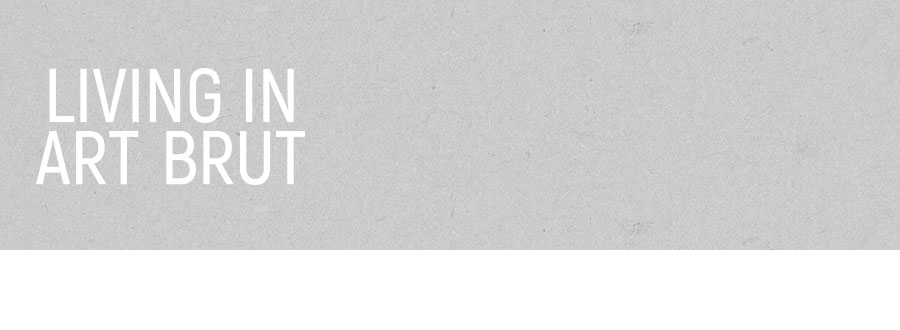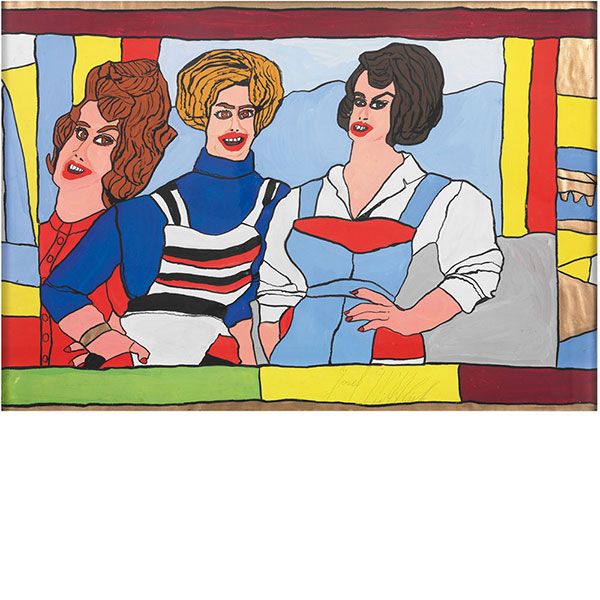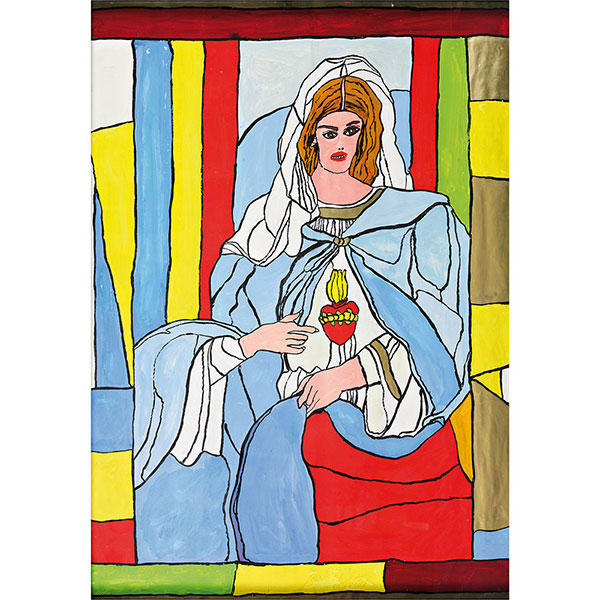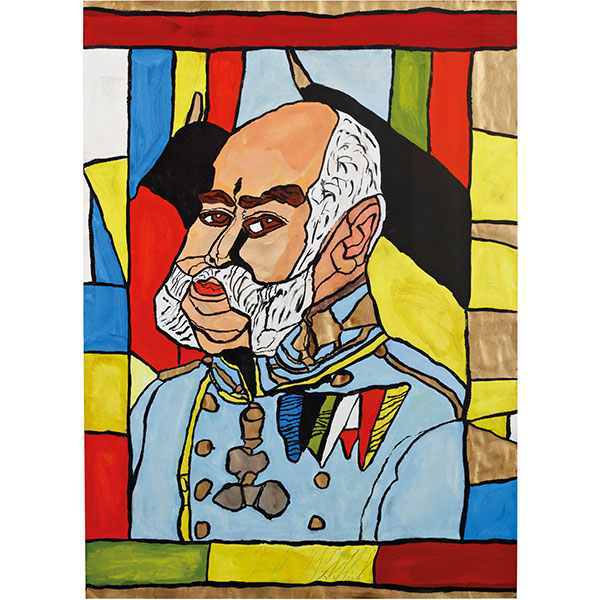Josef Wittlich
1903 to 1982, Germany
Josef Wittlich was born in Gladbach/Neuwied, in Westerwald, Germany. He was the son of button-maker, and grew up in humble circumstances. He lost his mother when he was four years old.
In the 1920s he was a casual labourer and in 1930 he found a job as day labourer in a pumice stone works near Höhr-Grenzhausen. There he began to draw in his free time, copying from templates. In 1948 he began to work as a labourer for an industrial ceramics company. He worked there until retirement. He also lived on the factory site in a bunkhouse, where he painted, usually at night. He was allowed to hang his pictures on the ceilings, walls and cupboards. He was discovered in 1967 by the artist Fred Stelzig. Wittlich was also promoted by Dieter Honisch, who later became director of the National Gallery in Berlin, and the artist’s work was then shown in many solo exhibitions and collections in galleries and museums at national and international levels. An important solo exhibition was in 1982, at Mathildenhöhe in Darmstadt, for which a catalogue was published. At first, Josef Wittlich’s pictures were all images of wars and combat. Gradually these themes were joined by women, celebrities, animals and towns. His templates were taken from mail order catalogues and magazines. His paintings are brightly coloured, in the style of posters, and reminiscent of Pop Art. In 2014 a comprehensive monograph was published, with a catalogue of Wittlich’s work, and launched with the help of Dieter F. Lange (who has managed his estate since 2006), in the very same production hall where Wittlich had worked for so long.
His work can be seen in many Art Brut collections, such as the Charlotte Zander collection in the Museum Bönnigheim in Germany, The Museum of Everything, the collection of Gerhard and Karin Dammann, Switzerland, and the collection of Eternod & Mermod, Switzerland. As of 2021, Josef Wittlich has also been represented in the 921 works of the “Donation d'Art Brut de Bruno Decharme” at the Centre Pompidou in Paris.
Selected works







